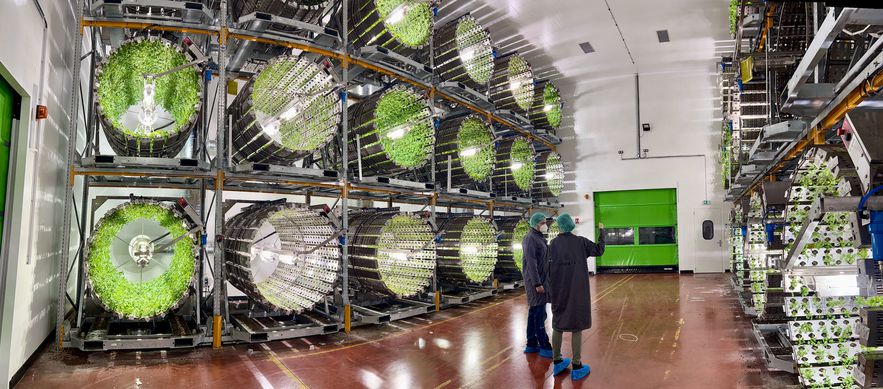To produce one kilo of lettuce, you need about… 250 liters of water. For cucumber 350 and up to 700 liters for the same quantity of apples. As the drought intensifies and farmers in southern Europe worry about the upcoming season, a handful of start-ups are relying on a new, more water-efficient way of growing: the vertical farm. The concept is simple: stack crops high. Theorized by American researcher Dickson Despommier at the end of the 1990s, the model has not supplanted traditional farms. In France, only a few young shoots are present on the market. The pioneer is called Jungle, chaired by Gilles Dreyfus, its co-founder. “The biggest advantage is the low water consumption. On our Château-Thierry site, we have a 98% reduction in its use compared to traditional crops on the same varieties of plants”, boasts the entrepreneur.
To do this, Jungle farms and other players in the field use specific cultivation methods: aeroponics and hydroponics. This consists of growing plants above ground or without soil, which allows strict control of the amount of water used and limits losses. The argument is weighty, as the agricultural world accounts for nearly two-thirds of water consumption in France, and the sector is on the front line in the face of bad weather and very high heat.
Controlled environment allows no use of pesticides
Cultures take place in large sheds, isolated from outside pests. This particularity makes it possible to exclude the use of pesticides, fungicides and other phytosanitary products. Pascal Thomas, president of Futura Gaïa, another company in the sector, made it a personal and important mission: “My father was a farmer. He died after Parkinson’s disease linked to the pesticides he was spreading on his farm.”
Christine Aubry, PhD in agronomy at AgroParisTech, on the contrary points out the shortcomings of these closed environments: “They are not capable of absorbing shocks. As soon as there is a micro-cut, all production collapses.”
The major disadvantage raised by the detractors of vertical farms remains the significant use of energy that they require. As the shoots are indoors, they must be supplied with light by lamps. This problem, Futura Gaïa has taken it into account in its development, specific to the start-up from Gard: rotating cylinders. “We light the same number of plants with two to three times fewer lamps. Thanks to the rotation, there is never a shadowy area and we divide the consumption by three. And then, what is is the most difficult to produce? Water or electricity?” asks Pascal Thomas.
Futura Gaïa has developed a rotary system in its pilot farm in Tarascon.
© / Futura Gaia
Unprofitable systems
“With vertical farms, it is difficult to be profitable. The return on investment is made over the very long term”, nuance Véronique Saint-Ges, researcher in economics at Inrae, and not really a supporter of the project. The facilities and the cost of production generally affect the selling prices. The development of the environment is therefore slowed down. A situation that Gilles Dreyfus recognizes, but the boss of Jungle is betting on the future: “Nothing existed ten years ago, we had to look for know-how and bring them together within the same structure. […] The industry is not yet optimized. However, the crop parameters allow us to maintain harvests all year round, regardless of the season. Ultimately, the sector will be profitable,” he defends.
Jungle signed a partnership with the Swiss perfume company Firmenich at the end of 2021, and thus reserves 40% of its production for lily of the valley, a plant sought after in this industry. “Companies that succeed today are those that have turned to the most profitable sectors, such as aromatic herbs, but also pharmaceuticals and cosmetics,” confirms Christine Aubry.
Another market could develop in the coming years, the space sector. “With the proliferation of ever more ambitious projects, the astronauts’ diet must be taken into account. It is very interesting for this kind of system, but also very demanding.”
Vertical farms are now being established mainly in countries where production conditions do not benefit from as much space, “such as in Singapore or Japan, but also in extreme climatic environments, in the Gulf countries for example”, notes Christine Aubry. France is still resisting, despite the loss of attractiveness of the agricultural sector and the drop in exports, as pointed out a Senate report in September 2022. “We design our models to offer additional solutions, assures Pascal Thomas of Futura Gaïa. We come in addition, not in replacement”.
